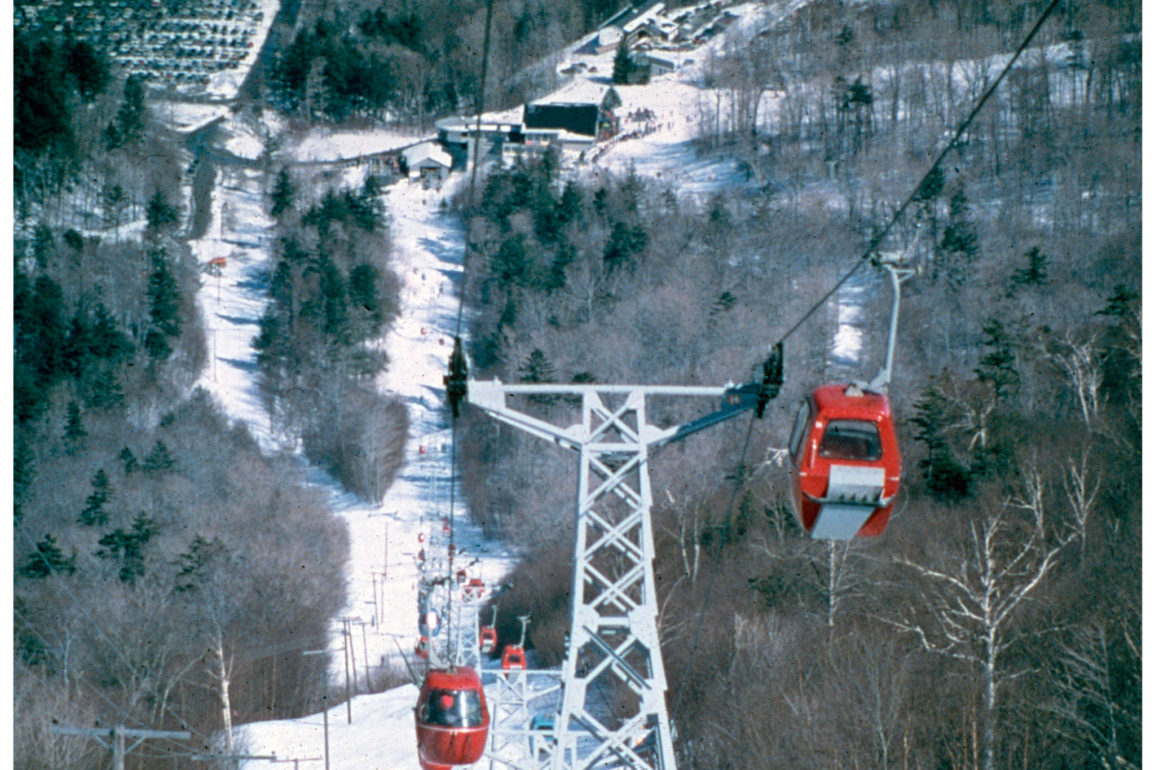The date was December 16, 1972. Everything seemed like a normal beginning for another great day of skiing at Sugarbush. As the Marketing Director I came in around 6:30am in the morning and unlocked the Valley House base lodge. I checked in by radio with the evening snowcat drivers to get the new snowfall totals. I then began calling local radio stations with the day’s updated snow report.
The ski lift operators started arriving at 7am to begin their morning safety checks. Don Thayer was the head Gondola operator and as usual, arrived a little before the rest. When built, the Sugarbush Gondola was the longest ski lift in North America. At a length of 9300 feet, It covered the entire mountain, top to bottom. It was the main attraction at the mountain. The drive motor for the Gondola was located at the top of the lift and had a remote start button at the base.
Don and a couple of helpers would always go up the gondola a little after 7am. They would shut it down for a short time while they shoveled the snow out of and around the building. Then they would start it up again to bring up the rest of the crew plus the ski patrol. The patrol had to take the first run to safety check the trails for fallen trees, snow drifts, etc.
But that morning something strange happened. Don pressed the start button and got no response. He pushed it again, no response. One more try, no response. Following protocol, he called lift maintenance. They tried, no response. They checked the electrical circuits, but still no response.
Usually Not Unusual
It’s not unusual for a ski lift to malfunction once in a while. That’s why they have safety systems built in. Just another normal day, no big deal. The lift wasn’t scheduled to open for the public until 9am anyway – there was lots of time.
The next option was to take a snowcat and drive to the top of the mountain, check it out, and start the lift from there. The top of the mountain at the time was covered in thick clouds which were just beginning to lift and break up a bit.
A little before 8am the snowcat arrived at the top. Then came the call over the radio: “The entire gondola top station is on fire!”
We all heard the radio call and rushed into Damon Gadd’s office because it had huge plate glass windows overlooking the Gondola base station with views right to the top of the mountain. Damon Gadd was the resort owner, John King was the General Manager, Jimmy Blakeslee was Mountain Manager and Lixi Fortna was the Office Manager and Clerk of the Works. We couldn’t believe it, how could the top station be on fire? We looked up and saw this eerie red, orange, glow pulsating thru the clouds – wow – this was for real – no drill.
Then, the clouds parted and we could see flames shooting at least 100 feet in the air. The top terminal was made of a steel frame with wood siding and walkways, but how could the fire be so intense? Well, also in the top terminal were containers of grease, oil and propane, but the main ingredient was the gondolas themselves.
Half of the three person gondolas are stored at night in the bottom station and half at the top. They were fabricated out of metal, plexiglass and fiberglass. Well when that fiberglass melted and got hot enough to burn, it burned like a volcano.
Now What?
We were all standing in Damon’s office in shock when Jimmy got on the radio and called Don, who was still in the bottom terminal waiting for the lift to start, “Don, get yourself and everyone else out of the bottom terminal immediately, don’t ask why, get out now, emergency.”
We all looked at Jimmy with a questioning look. Turns out, that a year earlier during a regular Vermont State ski lift inspection, the State Inspector at the time had mentioned to Jimmy, that if a ski lift terminal ever caught fire, one of the first things to happen was that because of the intense heat produced, the lift cable would partially melt and soon after catastrophically split in half. The huge concrete and steel counterweight would rapidly fall which could cause the then parted cable to whip violently or backlash. Anyone in its way would literally be cut in half!
About 15 minutes later, the cable did sever and the counterweight did fall, the cable reacted just as expected, whipping violently.
Thankfully the failure was at the top of the mountain and because of the fire, no one was near the lift. Without Jimmy’s quick thinking, this could have easily led to an unexpected and potentially deadly disaster.
Surviving Christmas
Luckily no one was hurt. Unfortunately, that left us without our most important lift at the mountain with Christmas right around the corner. We located a rope tow in Massachusetts that wasn’t being used and installed it in the Glades. We also built two big jitneys that were towed with snocats to shuttle people up to the rope tow and to Castlerock, what was now the highest accessible lift on the mountain.
The gondola was rebuilt the next year and Sugarbush to this day lives on.

